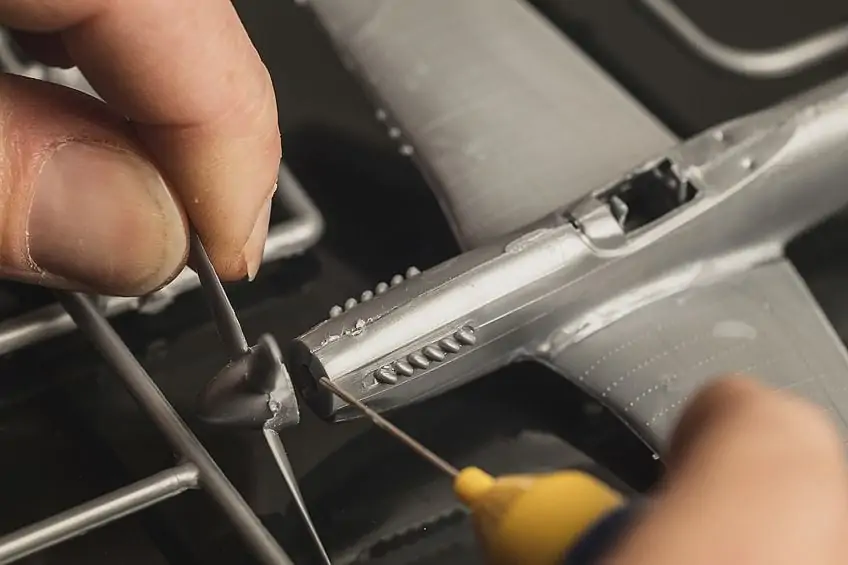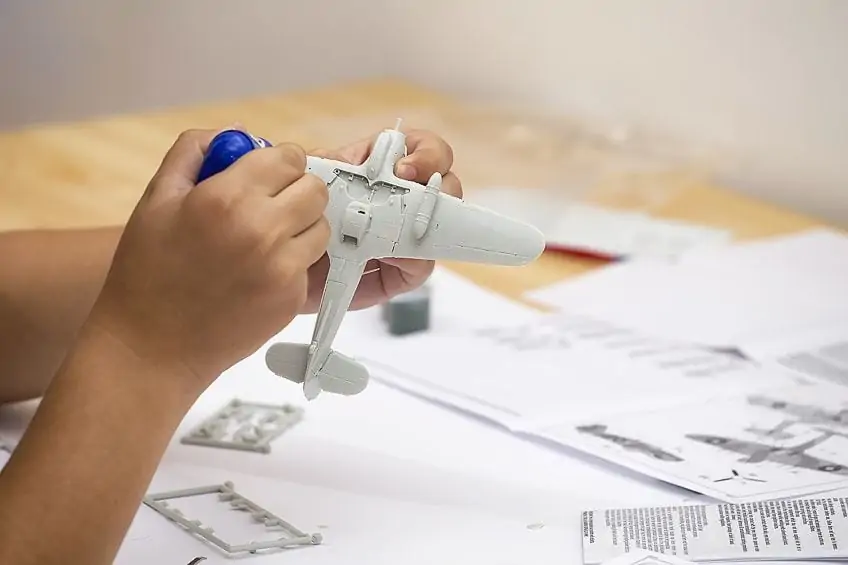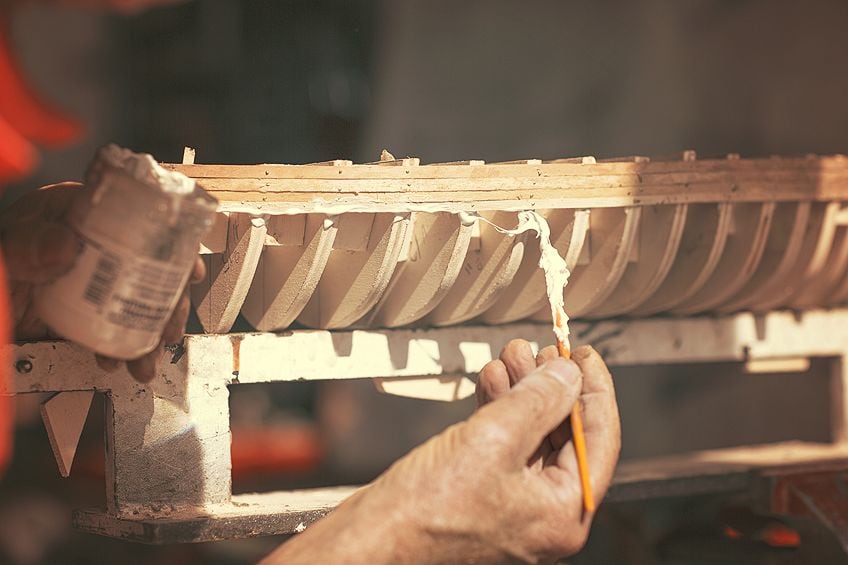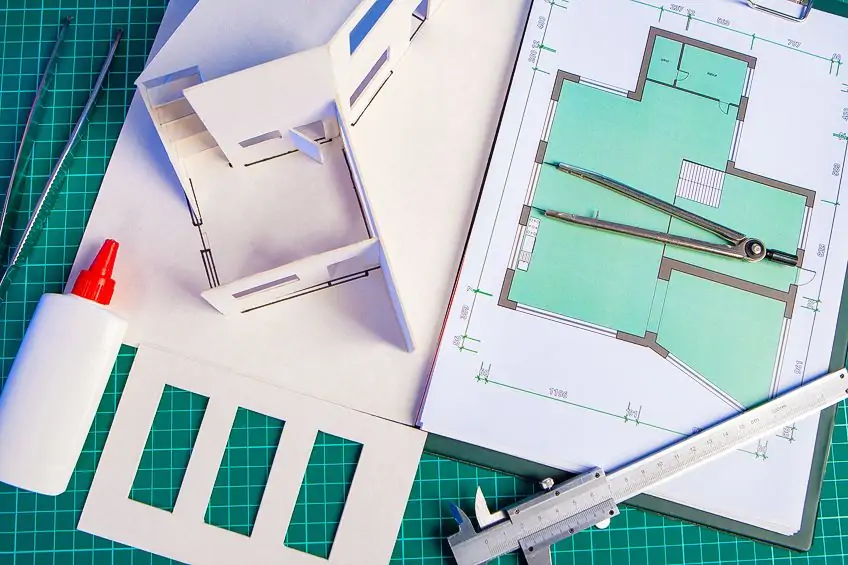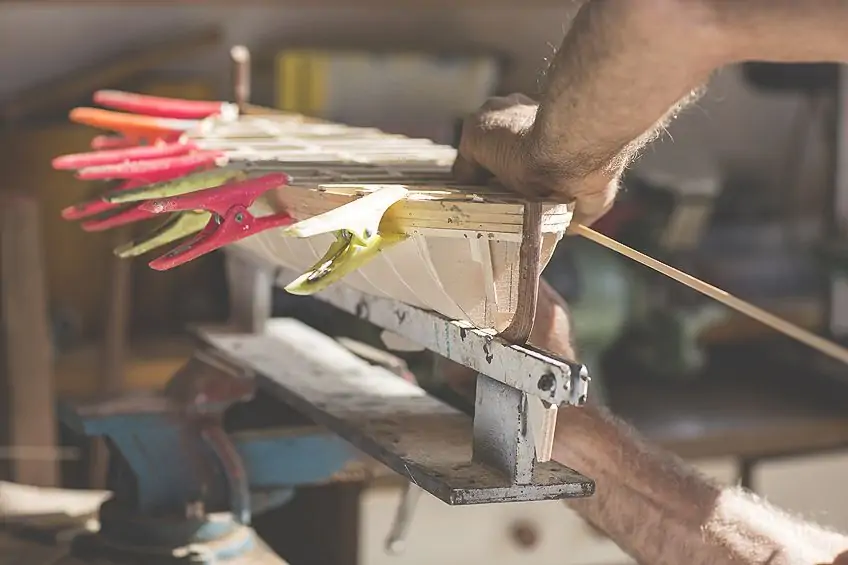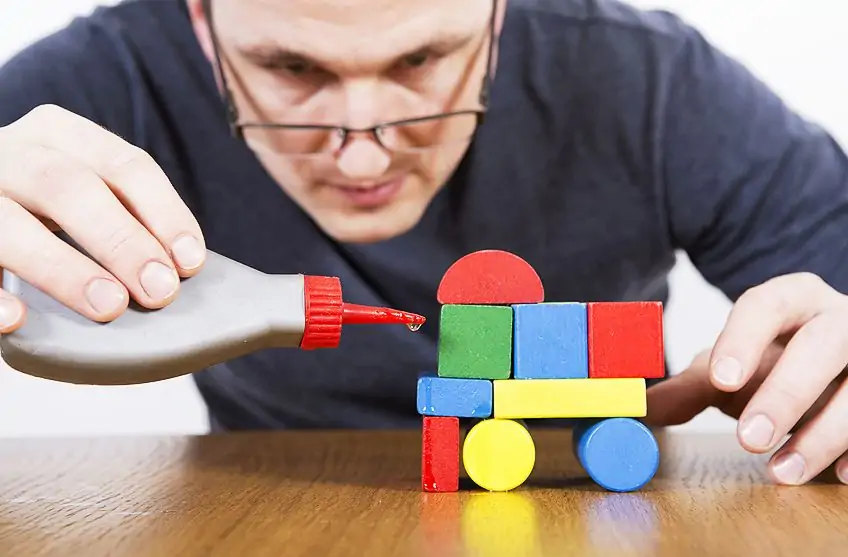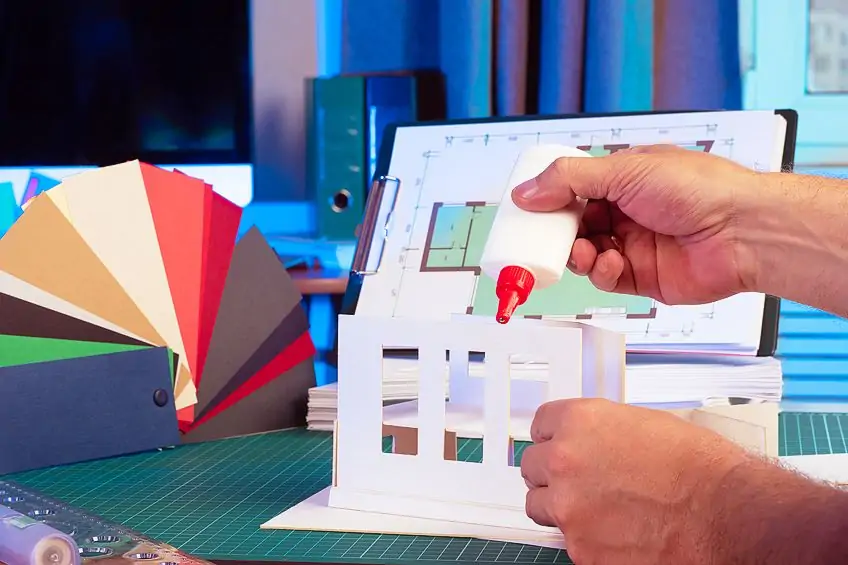Best Model Glue – What Is the Best Glue to Use on Plastic Models?
This post may contain affiliate links. We may earn a small commission from purchases made through them, at no additional cost to you. You help to support resin-expert.com
Have you decided to take up a hobby like building models? There are so many types of models you can build; it could be a miniature aircraft, ship, car, or even a miniature house for dolls. Once you have your model, you will need to find the best model glue. After a trip to the hobby store, you are sure to see how many different types of glues are available. So, how do you make sure you are buying the best model glue for your project? In this article, we will be helping you to select the right glue for your project so that your completed model is perfect and lasts a long time.
Table of Contents
What Is Model Glue?
Model glue needs to be reliable, strong enough, and also easy to use. The glue should be able to hold your project together without breaking down and should also last a long time. Finding the best model glue can be a challenge as some glues are only compatible with certain materials, while others work with all types of materials.
Whether you are buying your best model glue to use on metal, resin, or plastic miniatures, you need to ensure that you buy good glue that can work well on a variety of materials. We strongly recommend that you purchase model glue made from a specialized formulation so that you do put your project or model at risk by using ordinary household glues.
As there are so many different types of glues, you need to know what type of glue will be the most effective for your project, whether you are building a model made of plastic, metal, or resin. All the different types of glues have different chemical properties, which you need to consider. The strength of the glue also plays a major role in making your project perfect.
Let us now consider some of these different types of glues, their properties, and what they are best used for.
PVA or White Glue
Polyvinyl Acetate (PVA) glue is water-based glue that is used for commercial as well as domestic use. This type of glue does not give a very strong bond and is best used when building large-scale battle scenes, train scenes, or landscapes, where it has to be spread over a large surface.
However, it is very easy to use and is also fairly cheap. The glue comes in very handy when trying to stick on small stones or grass when building a display for your miniature model. The glue dries a white opaque or clear finish, and if you find you made a mistake, it is very easy to remove.
Aliphatic Glue
This is wood glue and is often referred to as yellow glue. This glue is often compared with PVA glue, except that aliphatic glue sets more quickly and forms a stronger bond. This type of glue can also penetrate porous materials. The glue is water-resistant and dries to a cloudy color, and is perfect for bonding wood to wood.
Cyanoacrylate (CA)
This is the chemical name for superglue and is known in the miniature model community as CA glue. This glue is widely used in model building to bond metal to metal, or metal to plastic, giving you an extremely strong bond. However, even though it can withstand a pulling force working against the bonded joint, it is not very strong when the force applied to the joint is in the opposite direction.
The glue sets very quickly, making it ideal for model building as you do not have to pin or clamp the pieces together. CA glue is available in various consistencies from a thick gel to a thin watery consistency. This type of glue is not recommended for all types of plastic materials, however, and you need to take care when working with it as you want to avoid the glue coming into contact with your skin.
Epoxy Resin
This is a two-part glue that consists of a hardener and a resin. Once the two components are mixed, you will get an extremely strong adhesive that can be applied to almost any surface. The drying time of this glue is longer than that of superglue, but the drying time can be accelerated by adding more hardening agents. This type of glue is mainly used where an extra-strong bond is required to glue different types of materials together. Therefore, it is not often used in the miniature model-making community.
Solvent Cement
The solvent cement option is a popular choice for miniature model builders and is made up of a mixture of pure solvents such as butyl acetate, acetone, and methyl ethyl ketone (MEK). These are then combined by using different ratios of styrene resins, better known as plastic. A solvent cement that has a thinner consistency will contain less styrene resin, while the thicker consistency cement contains more plastic resin.
What makes this type of glue exceptional is the way it bonds plastic. The cement chemically melts the two surfaces and welds them together to give a strong bond. This type of bond will outlast any other type of glue and can also be sanded and reshaped without weakening the joint. You need to take care when using this product, as it can ruin your project by melting thinner sections and can create bent and warped plastic pieces.
This is an excellent product to use for plastic miniature model building, but is not very effective when used on other types of materials.
Canopy Glue
This is an ideal glue to use for bonding plastic to plastic and is great for miniature model airplane building, particularly when you need to glue clear plastic canopies to the fuselage. The glue will dry clear and will in no way alter or deform the plastic. It will also leave no visual defects behind that will show on the canopy. The glue is easy to apply, and although the bond is not super strong, it will do the job perfectly.
Best Model Glue Comparison Table
There are so many different types of glue for your miniature models, and we have only given you three for your project needs. To help you further, we have drawn up a comparison table to give you a better idea of what glue to use for what project. The table shows three types of glue that can be used for gluing models, with certain properties for each one as well as what materials you can use them on.
| Superglue | Solvent Cement | PVA Glue | |
| Easy to use | ✔ | ✔ | ✔ |
| Drying time | Touch-dry within 20 seconds and dries completely in 1 hour | Touch-dry within 20 seconds and dries completely in 2 hours | 30 minutes to dry and 18 to 24 hours to cure fully |
| Versatility | ✔ | ✔ | ✔ |
| Viscosity | Different viscosities | Medium | Medium |
| Bonding strength | Strong | Very strong | Medium (does not have the strength of CA) |
| Strong fumes | ✔ | ✘ | ✘ |
| Best for | Metal miniature model building, arts and crafts, and various DIY projects | Plastic miniature model building, arts and crafts, and various DIY projects | Wood, porous materials, and as insulation foam for adding terrain to your bases |
| Drying color | Varies | Clear | Dries clear |
| Finishing | Can be sanded and painted with oil-based paint (read instructions) | Can be painted, but it is recommended that you first prime it | Flexible once dry. Not for bonding heavier objects or resin |
| Plastic | ✔ | ✔ | ✘ |
| Metal | ✔ | ✔ | ✘ |
| Wood | ✔ | ✔ | ✔ |
| Ceramics | ✔ | ✔ | ✔ |
| Foam | ✔ | ✔ | ✔ |
| Paper | ✔ | ✔ | ✔ |
| Rubber | ✔ | ✔ | ✔ |
| Leather | ✔ | ✔ | ✔ |
Things to Consider When Purchasing Glue for Plastic Models
If you want your project to be a huge success, then there are certain things to take into account before you go out to buy your glue. If you fail to consider these few basic requirements, then you could find yourself disappointed with the outcome of your project. All it takes is a few minutes to learn and make sure that what you buy is the correct glue for your project.
Material Capability
The most important aspect for you to consider when buying your glue is material capability. This means that you need to be sure that the glue you buy will be compatible with the type of material you are working with. Also, it needs to be a glue that works well with most types of plastics. This information can be found on the product label, which will indicate the surfaces the glue will work on. You should also have some instructions on how to use the glue.
Scope of Your Project
You need to keep the scope of your project in mind, as this will dictate what quality glue you should buy. Usually, when the strength of the glue increases, so does the price, as higher quality glue can be used for more specific purposes. This does not mean that if you are busy with a simple project, you should buy lower-quality glue. However, if your project is more complex and the parts cost a lot more money, then you need to buy high-quality glue.
No matter what your project is, buying good-quality glue is always a better option.
Drying Time
The drying time is the time it takes for the glue to harden with enough strength to hold the parts you have joined together. This time can vary from glue to glue according to its formulation. Some of the glues like superglue, for instance, can harden within seconds, while others may take a longer time to set properly. This aspect is important and depends on the type of miniature model you are building as well as the type of material it is made from.
Clamping Time
The clamping time is the time it will take for you to hold onto or clamp the parts in position until the glue hardens. When clamping parts together, they need to be held perfectly in position with no movement, as just the slightest motion can ruin your project. Just as the drying time varies from glue to glue, so does the clamping time, and you need to consider this before buying your glue.
Viscosity
The consistency or density of the glues can also vary. Some glues have medium, thick, thin, and even extra thin consistencies. So, the viscosity can play a vital part in your project and needs to be carefully considered before making a purchasse. Most of the thicker glues tend to dry more slowly, but allow you some time to reposition your parts before they are set.
On the other hand, the thinner glues dry very fast and give you very little time to position your parts. These are better than the thicker glues in terms of cleanliness and precision when applied.
Best Model Glue
In the hobby model industry, glue is a top-seller item, and most modelers tend to go for plastic glue. You might be a seasoned modeler and have your preferred type or brand of glue, or you may be a beginner that is just starting in the model building industry. This means that your choice of model glue will depend on a few factors, such as the project you are involved with, your level of skill, and of course, your patience with the setting time of the glue you choose. We are now going to look at a few of the best model glue brands available.
Best Model-Glue for Plastic Miniatures: TESTORS Plastic Cement
Superglue can be a very effective plastic model glue, helping to bond your plastic model. But if you have clear plastic parts such as windows, then superglue is not recommended as it will cause the clear plastic to become cloudy. Also, super glue is not compatible with all types of plastics. Therefore, we suggest you use Testors Plastic Cement, which is a quality product that is quick-drying and designed especially for use on plastic miniature models. This model cement is very often the adhesive that comes with various modeling kits. The glue is pliable and can be used very effectively, and once it is dry, you will have a very strong and durable bond.
- Model glue for DIY projects, model kit building, and craft projects
- Includes 4 precisions glue tips and offers a strong hold
- Made in America - great quality since 1929
The main advantage of this model cement is its precision. This is due to its density, which is not too runny and just thick enough, making it very easy to apply on irregular or regular surfaces. The product comes with four precision tips, allowing you to apply the glue exactly where you want it.
The Testors model glue is compatible, practical, and effective with numerous types of plastics, and is used extensively for model building, arts and crafts, and several other DIY projects. This plastic cement is so effective that many users have even used it to repair various kinds of electronic components. This is because of its precision applicator, making it possible for use on small, detailed objects.
This plastic cement has a very fast drying time and can cure within a minute, making it ideal for use on your plastic model building project. If you are a model-building enthusiast, you will know how important this is as you are often required to hold the parts you are gluing in your hands until they are set. Once it is cured, the glue provides strong and durable results.
All of this makes the Testors plastic cement a very worthwhile product. It is also affordable and has a two-year shelf life. Testors model glue is the best model car glue and model airplane glue available.
PROS
- Easy to use
- Dries fast
- Pack includes additional two tubes and four nozzles
- Very powerful and durable hold
CONS
- Glue does not last all that long
- Tubes may clog up
Best Model-Glue for Metal Miniatures: GORILLA Super Glue Gel
Most metal miniature models are made from pewter, which is a soft and malleable metal alloy. Superglue is the best type of glue to use when gluing this type of metal, especially for smaller parts. The Gorilla Super Glue Gel Clear is readily available and easy to find at most hardware and hobby stores. The glue is supplied in a bottle with an easily dispensable tip.
This glue is viscous and sticky, but it will flow smoothly wherever you want it to go. The glue will give you a strong bond that can hold all pieces firmly together, which is ideal as it sets very quickly, so you do not have to pin or clamp any of the parts.
- No-run control gel formula that is great for use on vertical surfaces
- Versatile glue with an anti-clog cap to prevent it from drying out
- Specially formulated for increased impact resistance and strength
One major drawback with the use of any superglue product is that, over time, any unused glue will slowly lose its sticking power and will no longer cure properly. However, you can overcome this problem by making use of an accelerant like Pacer Technology (Zap) Kicker Pumper that helps the superglue to cure correctly.
This Gorilla superglue has a no-run formulation and can even be applied on a vertical surface. It also provides increased impact resistance. The adhesive is a very versatile product and can be used on many surfaces like paper, wood, metal, ceramics, leather, and much more. However, is not recommended for use on polypropylene, polyethylene, or similar materials. The glue is also very fast setting and cures within 10 to 45 seconds, and even comes with an anti-clogging cap to ensure that your glue will never dry out.
However, if you are busy with a larger project, where the parts are a lot bigger and need to be pinned, you will then require a stronger glue. In this case, Gorilla’s two-part epoxy glue is recommended.
PROS
- No-run formulation, enabling you to apply it on a vertical surface
- Fast drying time and requiring no clamping
- Provides a tough and increased impact resistance
- Very versatile
- Easy to use
- Fairly cheap
CONS
- Can bond to your skin
- May not be very effective when applied to water-repelling or dry surfaces
- Produces harmful vapors and fumes
Best Model-Glue for Resin Miniatures: STARBOND CA Super Glue
As resin material is porous and flexible, it can pose a problem when bonding items. This means that superglue is the best glue for resin models. Resin is a material that is cast from a mold, and a lubricant is usually used on the mold to make removal easier. Therefore, you should wash the lubricant off of the resin before you glue it.
The Starbond CA Super Glue is a medium-viscosity, fast setting, and high-performance adhesive, making it the best glue for resin models as it will hold the pieces firmly together. The glue comes with two applicator caps and a clog-free stopper, and also has eight extra micro-tips for precise application.
- High-performance industrial-grade adhesive
- Comes with extra supplies and offers a long shelf life
- Great to have around in the house for "general purpose" repairs
The glue is very versatile and is a great product to use for miniature model building, pen making, bonding of close-fitting parts, and various other applications. Its viscosity is similar to motor oil and has a shelf life of several years if stored correctly. The glue is very versatile and can be used on ceramics, fiberglass, rubber, leather, wood, metal, and most plastics.
However, if your project involves a larger surface area, then it is recommended that you use a two-part epoxy adhesive instead. This will give you a stronger bond, but you will have to pin or clamp your pieces together for it to adhere properly.
PROS
- Medium viscosity
- Versatile
- High performance
- Fast setting
- Supplied with two extra caps and a clog-free stopper
- Also included are eight precision micro tips
CONS
- Glue may dry out within the bottle
- Can bond to your skin
- Produces harmful vapors and fumes
How to Assemble Your Miniature Model Using Glue
Before you start applying the glue, it is strongly recommended that you first “dry fit” the applicable parts to make sure that they fit together properly without leaving any seams or gaps. If you do find some parts leaving a gap or seam, you still have time to take some sandpaper and remove some of the material until it fits together perfectly. If you still find some small gaps after you have glued the parts together, you can use a gap filler to close the gap and smooth out any imperfections.
But first, below are some tools you will require.
Tools Needed for Assembling Your Miniature Model
Now that you have bought the right glue for your project, it is time for you to gather all the necessary tools and equipment for your project. We have already mentioned that different types of glue dry at different times, so you need to consider this fact before you start to prevent any delays.
Drop Sheet or Mat
In case you have an unfortunate spill, make sure that you cover the underlying surface with a drop cloth, mat, or plastic sheeting to avoid unnecessary clean-up afterward. It is also advisable to have some paper towels nearby to clean up any spilled glue immediately.
Clean-Up Materials
It is important to have some acetone or nail polish remover, Vaseline, cotton swabs, and a small container nearby to help you when you accidentally stick parts together. These products will help to remove the glue from the parts, but be careful with the acetone, as it will discolor the plastic it comes into contact with. Having a bit of hot water in a container will help to dissolve the superglue you applied in the wrong place.
Sandpaper and Hobby Knife
Sandpaper is necessary to make the surface you are going to glue a little rough, as this enables the glue to bond better. However, if you are using solvent cement, this action is not necessary. You may also want to use the sandpaper after the parts are glued together to remove any excess glue that has formed where you do not want it to be. A scalpel or hobby knife can be used to trim off any rough pieces. You can also use a knife to scrape any unwanted glue that has dripped onto any other parts.
Clamps
If you are using epoxy resin or a slow-drying glue for your project, you will need a clamp that can hold the parts in place while the glue dries. This is important as the parts will move and the bond will be ineffective if they are not held firmly in place.
Applying Glue to Your Miniature Model
Try not to use more glue than is necessary; applying more glue does not mean the bond will be stronger. However, if you use too much glue, you will make the job a lot harder for yourself. Excess glue does not only make the cleaning up afterward more difficult, but it can also distort the surfaces you are trying to join together.
This aspect is of extreme importance, especially if you are using plastic model glue, as this type of glue melts the plastic. So, if you apply too much, your plastic part will dissolve into a molten mess.
Cleaning the Surface
Be sure to take some soap and water and wash the parts of your plastic model before you glue them, as a clean surface will give you a stronger bond. If there is any oil from your fingers or dust left on the parts, this will automatically weaken the bond. When working with resin pieces, make use of an ultrasonic cleaner to speed up the cleaning process, giving the surface a stronger bond.
Follow the Instructions
When you apply the glue to the pieces, always follow the instructions from the manufacturer in terms of the method of application as well as the drying times. When using solvent glue, it is advisable that you first connect the pieces, and then using capillary action, apply the glue using a needle applicator, which allows the solvent to be sucked into the joint.
A brush is also okay for applying the glue and joining the pieces together. If you are using an epoxy resin, only mix a small batch at a time and then apply the resin to the parts using a toothpick. However, when using super glue, the nozzles supplied with the product are excellent applicators of the glue.
Cleaning Up
Now comes the cleaning up process, where it is always easier to remove the excess glue from your model before it sets. This can be done with some warm, soapy water. When using superglue or epoxy resin, you need to use a solvent-based chemical to remove the excess glue. You need to take extra care when doing this, however, as solvents can react with the plastic and deform or even melt the plastic.
Is it possible to paint the pieces first before you glue them? This question is a matter of preference, but it is advisable to glue the pieces first and then paint them afterward. This is because some glues may not stick to the paint, causing a weak bond.
Tips When Using Glue for Plastic Miniature Models
- Always make sure that the surfaces you are going to bond are clean, as dirt or grease will prevent the parts from bonding successfully.
- If you encounter problems when gluing very smooth surfaces, try using sandpaper to roughen the surface slightly, giving you a better bond.
- By using sandpaper, you can also increase the surface area, resulting in a stronger bond and a closer fit, although be careful not to overdo it.
- If you are using a slower drying glue, try to make use of a clamp to hold the pieces firmly together until the glue has dried properly.
Frequently Asked Questions
Is There a Difference Between Superglue and Plastic Glue?
Plastic glue is a broad statement – superglue, epoxy glue, and model cement can all be considered as plastic cement glue. However, the term plastic glue often refers to a solvent that forms a much stronger bond than superglue, but you need to take care when using it as it melts the plastic to form the bond.
Can You Apply Gorilla Glue to Plastic?
Gorilla glue covers a large range of different types of glue, and the manufacturer has made some of their glues suitable and compatible with some types of plastics. However, it should not be used on polyethylene or polypropylene.
Can You Use Plastic Glue to Fix Toys?
Most of the plastic cement glues are toxic, so it is not a good idea to use them for repairing your kid’s toys as they tend to put them into their mouths. However, most manufacturers also make a range of glue products that are non-toxic and pose no problem or risk for your children.
What Is the Best Glue to Use on Plastic Models?
Superglue is the glue used by most plastic model builders, but not all superglues are compatible with plastic, so you need to read the instructions carefully. For a very strong bond, solvent glue is the best choice as it melts the plastic, forming a very secure bond.
How Do I Get Plastic Glue Off My Hands?
Soak your hands in some warm, soapy water to soften the glue, and then try to remove it by massaging it off your hands. If this fails, use some acetone or nail polish remover to remove the glue, ensuring that you wash your hands well to remove all of the acetone. We recommend that you then apply some hand lotion as the acetone dries out your skin.
What Is the Best Model Glue for Model Cars and Airplanes?
Do not rely on superglue when bonding your miniature car and airplane models, as you do not want to risk the overall design and also the firmness of the joints. Testors model glue or Gorilla’s two-part epoxy is the best model car glue and model airplane glue.


